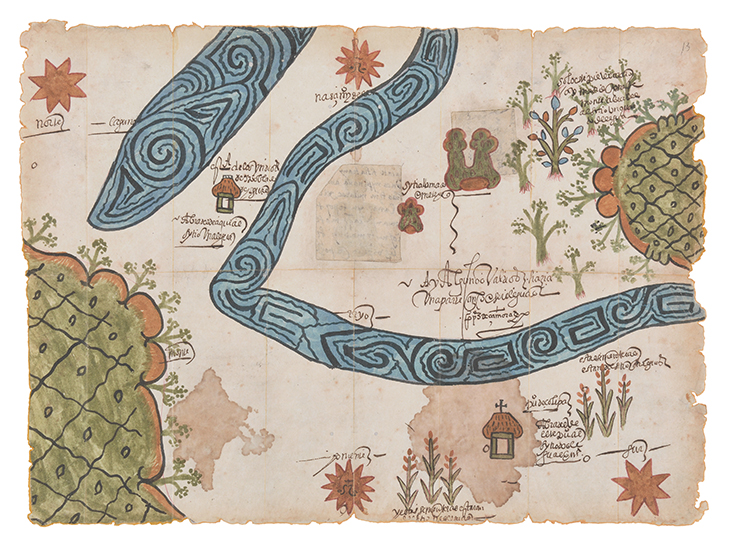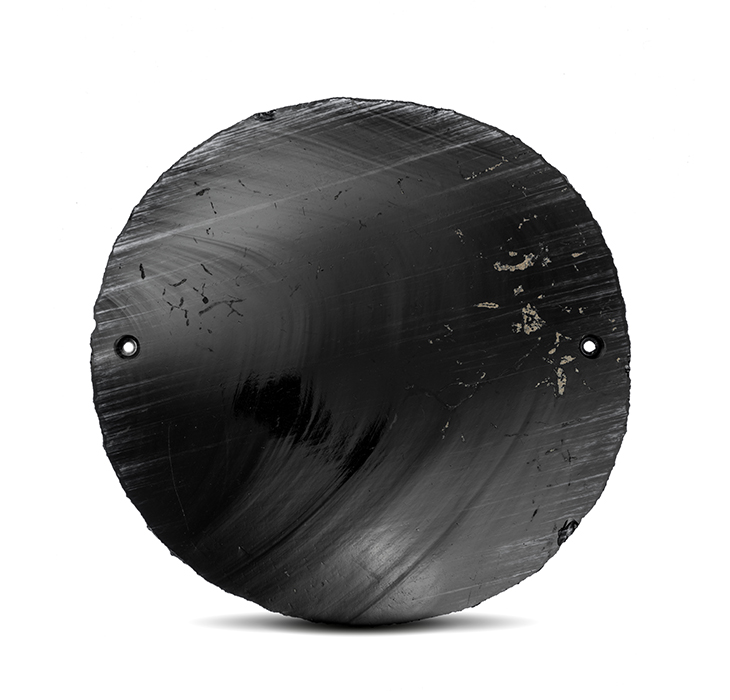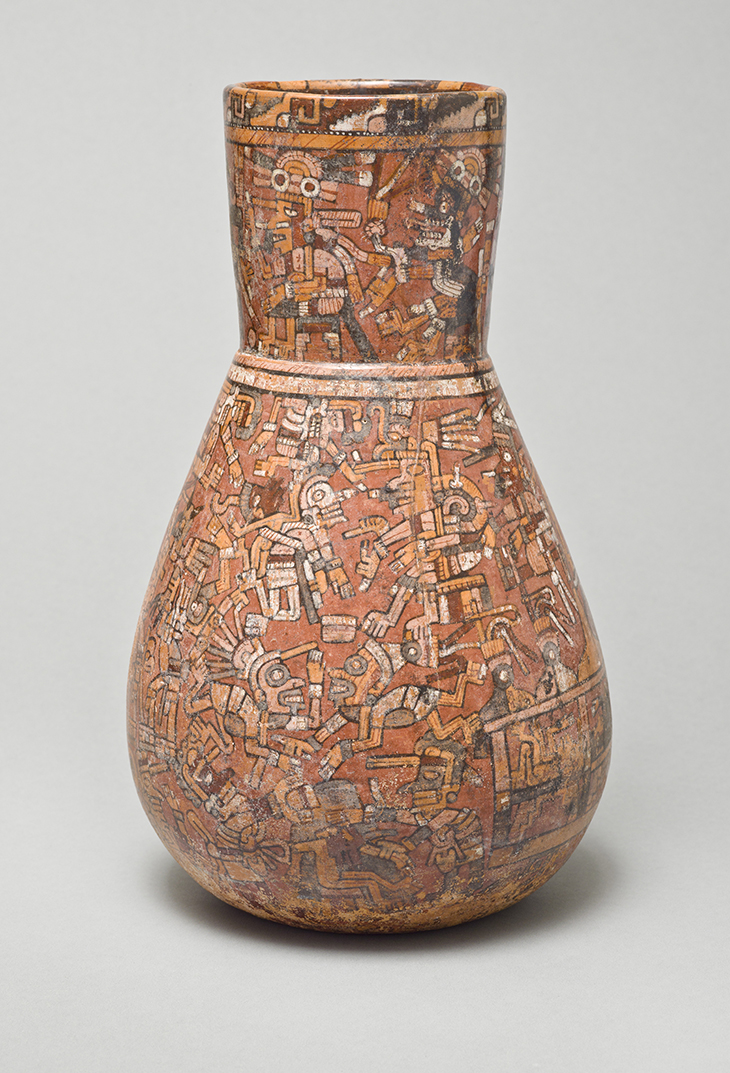Marking the 500th anniversary of the fall of Tenochtitlan (now the site of Mexico City), this display at the Los Angeles County Museum of Art (12 December–1 May 2022) explores how Nahua scribes and artists managed to preserve Indigenous forms of knowledge under Spanish rule. It takes its title from the Nahua term mixpantli, or ‘banner of clouds’, which referred to the first omen of the Spanish conquest. Highlights of the more than 30 works on show include a facsimile set of 16th- and 17th-century maps; a companion exhibition, ‘Mixpantli: Contemporary Echoes’, includes work by contemporary Mexican mapmakers who draw on Indigenous cartographical traditions. Find out more from LACMA’s website.
Preview below | View Apollo’s Art Diary here
Facsimile of a 1573 map of Zolipa Misantla, Veracruz, in the collection of the Archivo General de la Nación, Mexico City. Facsimile (2021) by Tlaoli Ramírez Téllez. Courtesy the artist and LACMA; © Tlaoli Ramírez Téllez

Obsidian mirror (1325–1521), Aztec. Photo: © Museum Associates/LACMA

Vessel with codex-style scene (1350–1500), Mexico. Photo: © Museum Associates/LACMA

Facsimile of a 1791 genealogy of the House of Moctezuma, held in the Archivo General de la Nación in Mexico City. Facsimile (2021) by Tlaoli Ramírez Téllez. Courtesy the artist and LACMA; © Tlaoli Ramírez Téllez




